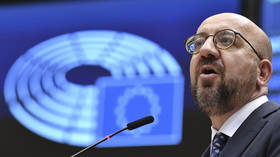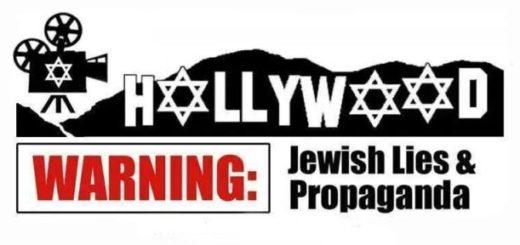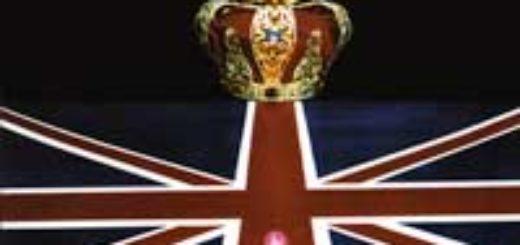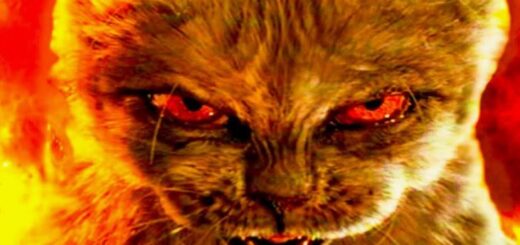U.S., NATO on Behalf of British Empire Aim to Destroy Russia’s Military and Russia Herself
US, NATO dangerously aim to destroy Russia’s military
Comment: NATO was created with the AGENDA of Keeping RUSSIA OUT, Amerika IN and Germany DOWN. NATO is run by the Jewish Mafia with American Taxpayer’s Money for the Mafia’s British Empire run outta City of London/Rothschilds/British Royals/Dutch Royals/Wall Street/Rockefellers, etc.
It is now official US and NATO policy to damage Russia’s armed forces to a degree that it will take a very long time to recoverBy FRANK LEDWIDGEMAY 4, 2022Print

Ukrainian soldiers use a launcher with US-made Javelin missiles during military exercises in Donetsk region, Ukraine, on December 23, 2021. Photo: Ukranian Defense Ministry Press Service
Nothing like a coherent strategy emerged from 20 years of NATO’s war in Afghanistan; at best there were long lists of aspirations with no clear objectives or assessments of the resources needed to achieve them.
But, two months after the Russian invasion, it looks very much as if the US and NATO are beginning to develop a coherent plan for Ukraine. Military strategy has been described as a synthesis of ends, ways and means. Last week, senior US and UK officials clarified the objectives – the ends.
For some time the US and NATO spoke of defending the sovereignty and territorial integrity of Ukraine. On April 25, in a speech pledging to defend the “rules-based international order”, Lloyd Austin, the US defense secretary, announced that the US wanted Russia “weakened to the point that it can’t do things like invade Ukraine.”
There should be no ambiguity about this. It is now US (and therefore NATO) policy to damage the Russian armed forces to a degree from which it will take a very long time to recover.
There are dangers in this strategic approach. For example, it is by no means clear that all NATO countries are entirely bought into Ukrainian (and US and UK) aims of completely restoring Ukrainian territorial integrity, let alone removing the Russian armed forces as a going concern.
This provides the opportunity for Russia to open and widen rifts as the war drags on and a diplomatic settlement continues to appear remote. This was Serbia’s strategy during the far shorter and less intense Kosovo war. Then there is always the danger of Russian nuclear strikes in the event of “catastrophic” Ukrainian success – a small but increasing danger.
So much for the ends as stated. What of the means? The somewhat ramshackle Russian armed forces over the course of its misbegotten campaign have sustained many reverses.
The worst by far was the passing by the US Congress of the Ukraine Democracy Defense Lend-Lease Act of 2022-2023, mandating US$33 billion for various forms of assistance. Most of that help will take the form of weaponry and training to enable the Ukrainian army to destroy Russia’s military equipment and kill its soldiers.
To place this in context, the entire Russian defense budget for the current year is $65.9 billion. Some believe that the Lend-Lease Act is an open-ended commitment by “the arsenal of democracy” to Ukraine which might encourage Russia to the negotiating table.
Finally, how will the West and Ukraine achieve their objectives? The first imperative on the battlefield, of course, is to secure success in the current main effort in the Donbas region. Russia is making local gains there, but is unlikely to achieve the breakthrough necessary to destroy Ukrainian forces.
UK-based military strategist Mike Martin argues that the current push is likely to “culminate” – or run out of momentum – in the next two to three weeks. After that, it seems likely that the Russian army will be in no state to resume the offensive any time soon. This will remain so, even if President Vladimir Putin announces a mass mobilization, as some – including the British defense secretary, Ben Wallace – believe he will.
Russia will find it very difficult to replace the troops and equipment it has lost in the short and medium terms. Indeed, British defense intelligence estimates that some of Russia’s more effective units will “take years to reconstitute.” Meanwhile, the Ukrainian army’s reserve system has allowed it to draw on human replacements far faster than Russia.

Bolstering Ukraine’s defenses
Further, a remarkable transformation is taking place in Ukraine’s army amounting to its de facto military integration into NATO. As Western equipment filters through to the frontline, NATO-standard weaponry and ammunition will be brought into Ukrainian service.
This is of far higher quality than the mainly former Soviet weapons with which the Ukrainians have fought so capably. The longer this process continues and deepens, the worse the situation will be for the already inefficient Russian army and air force.
We have already seen the effect of superior NATO weapons systems on Russia’s tanks and aircraft. The die will really be cast for the Russians when they lose their traditional dominance in artillery.
Recent transfers from NATO states, such as the Netherlands and France, in addition to US guns and artillery detection radar have been designed to accomplish exactly this. Similar processes are likely to take place with anti-aircraft weapons.
In the air itself, it is questionable whether introducing Western fighter aircraft will take place in the short term, given the lead times for supply and lengthy training requirements of at least six weeks. It is clear, though, that such transfers are no longer ruled out.
In addition to guaranteeing a usually far higher quality of weaponry, commonality between NATO and Ukrainian equipment will ensure a broader set of suppliers and a far more efficient logistics system.
5 May, 2022 15:01HomeRussia & Former Soviet Union
EU calls for confiscation of frozen Russian assets
Sanctioned assets should be used to rebuild Ukraine, the European Council president says

President of the European Council Charles Michel © AFP / John Thys
Russian assets that have been frozen in the EU as part of sanctions against Moscow over the conflict with Kiev should be seized and allocated for the reconstruction of Ukraine, European Council President Charles Michel said on Thursday.
“I’m absolutely convinced that this is extremely important not only to freeze assets, but also to make it possible to confiscate them, to make them available for rebuilding the country. I’m personally convinced,” Michel insisted in an interview with Interfax-Ukraine news agency.
He revealed that he had already told the Council’s legal service to come up with “some possible ideas in order to find a legal solution in line with the principles of the rule of law, that would facilitate and make possible the confiscation of the assets of the people who are sanctioned by the EU or by other countries in the world.”
Acting in such a manner should be “a question of fairness, a question of justice” for Brussels, he added.
However, Michel acknowledged that implementing his plan on a “legal level is not so simple.”Read more Kremlin accuses US of ‘expropriation’
“There are 27 legal systems across the EU and, in many EU member states, this needs a decision taken by a court in order to make it possible. It takes time, it’s a difficult and long process,” he explained.
The European Council president’s ideas echoed those previously voiced by Washington. In late April, the White House presented a set of “comprehensive proposals” aimed at supposedly holding Russian “oligarchs” accountable for the events in Ukraine. The proposals included “establishing a streamlined administrative authority” that would be able to confiscate sanctioned assets and transfer them to Kiev to “remediate harms of the Russian aggression.”
Moscow decried those American plans as “nothing but simple expropriation of private property that [the US] seeks to falsely justify.”
Kremlin spokesman Dmitry Peskov said it would become “a very dangerous precedent,” showing “just how fragile all the universally accepted foundations have become” in the field of private property rights, economics and politics.Read more Poland suggests plan for seized Russian assets
The US, EU and some other countries have slapped several rounds of unprecedented economic sanctions on Moscow over its ongoing military operation in Ukraine. Foreign assets of the Russian Central Bank and various other entities and businessmen have been frozen, Russia was effectively cut off from the dollar- and euro-dominated money markets, and a wide array of foreign businesses have stopped dealing with the country.
Russia attacked its neighboring state in late February, following Ukraine’s failure to implement the terms of the Minsk agreements, first signed in 2014, and Moscow’s eventual recognition of the Donbass republics of Donetsk and Lugansk. The German- and French-brokered protocols were designed to give the breakaway regions special status within the Ukrainian state.
The Kremlin has since demanded that Ukraine officially declare itself a neutral country that will never join the US-led NATO military bloc. Kiev insists the Russian offensive was completely unprovoked and has denied claims it was planning to retake the two republics by force.

















